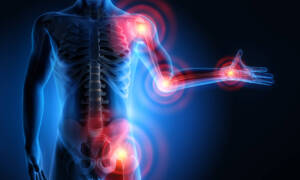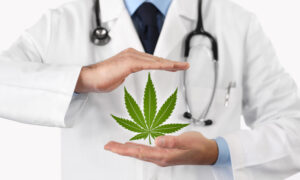
With 40 states legalizing medical marijuana and the American Medical Association seeing value in the plant as an aid, more people are using it in their medical help tool box. Medical marijuana has shown it can help with nausea, pain management, the treatment of cancer, especially during chemo, sleep, depression and more. There are over 4 million registered patients and many times more of those who try it on a smaller basis. But does it get you high?

RELATED: Science Says Medical Marijuana Improves Quality Of Life
Pre-legalization, medical marijuana users had to rely on their personal friends or dealer to secure the plant and then figure out a way for it to be consumed. Joints and brownies were the most popular and regulating the amount of THC proved difficult. This sometimes left the patient physically better and mentally stoned.
So regulating the amount of THC is an art in medical marijuana because you want the benefits but may not want to be fully stoned. THC’s chemical structure is similar to the brain chemical anandamide. Similarity in structure allows the body to recognize THC and to alter normal brain communication. They affect brain areas that influence pleasure, memory, thinking, concentration, movement, coordination, and sensory and time perception. Because of this similarity, THC is able to attach to molecules called cannabinoid receptors on neurons in these brain areas and activate them, disrupting various mental and physical functions. THC, acting through cannabinoid receptors, also activates the brain’s reward system, which includes regions that govern the response to healthy pleasurable behaviors such as sex and eating.
In legal medical marijuana states, the packaging should tell you the strength of the product. Edibles, oils, and vapes tend to be the most popular way to consume for medicinal purposes.
The FDA doesn’t oversee medical marijuana like it does prescription drugs. Although states monitor and regulate sales, they often don’t have the resources to do so. That means the strength of and ingredients in medical marijuana can differ quite a bit depending on where you buy it. Talk with knowledge staff at the retailer, explain your purpose and ask any questions. If the first product doesn’t fully help, look for more help and guidance. The industry is full of people who want you to have exactly what seek.

Getting high while using medical marijuana is strictly a personal choice and not a guarantee. You can adjust to treat your symptoms without having a long journey. On the safe side, do not drive or use heavy machinery.
You can also look for traditional support groups for your issue and find tips for fellow suffers are usually happy to share their lessons learned.
RELATED: Nauseous? Marijuana Might Provide Immediate Relief
If you are trying medical marijuana, like most long term drugs, you will need to spend a little time experimenting on dosage. Most medicines need a little trial and error to maximize the health benefits.



